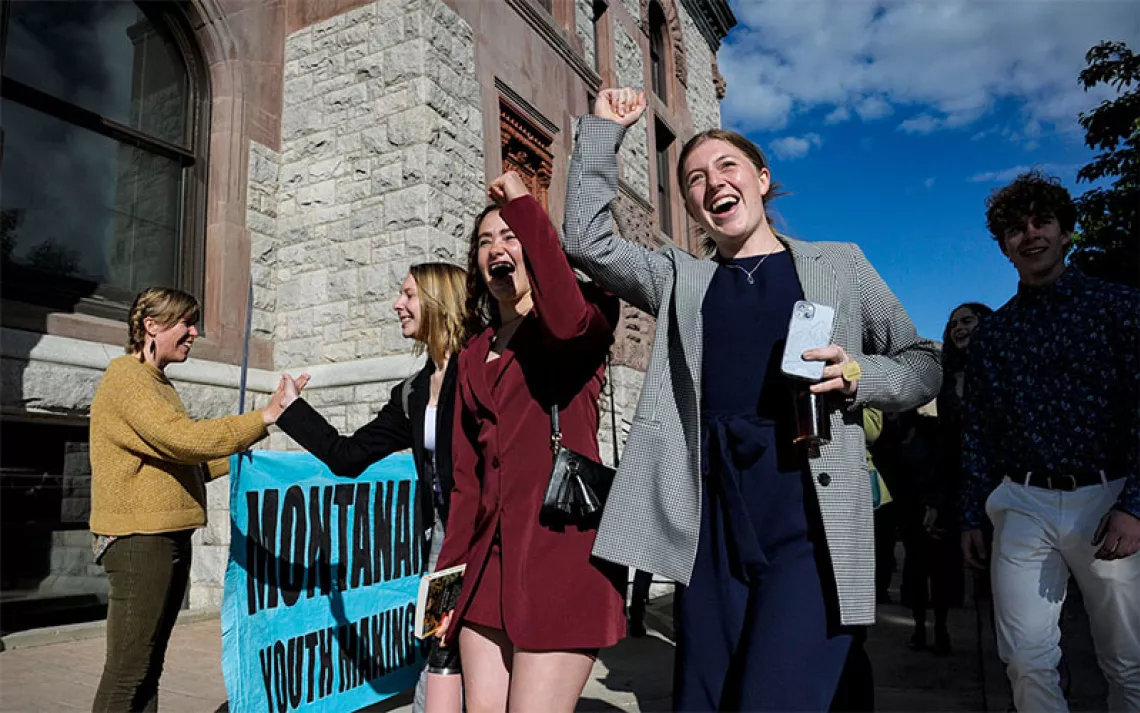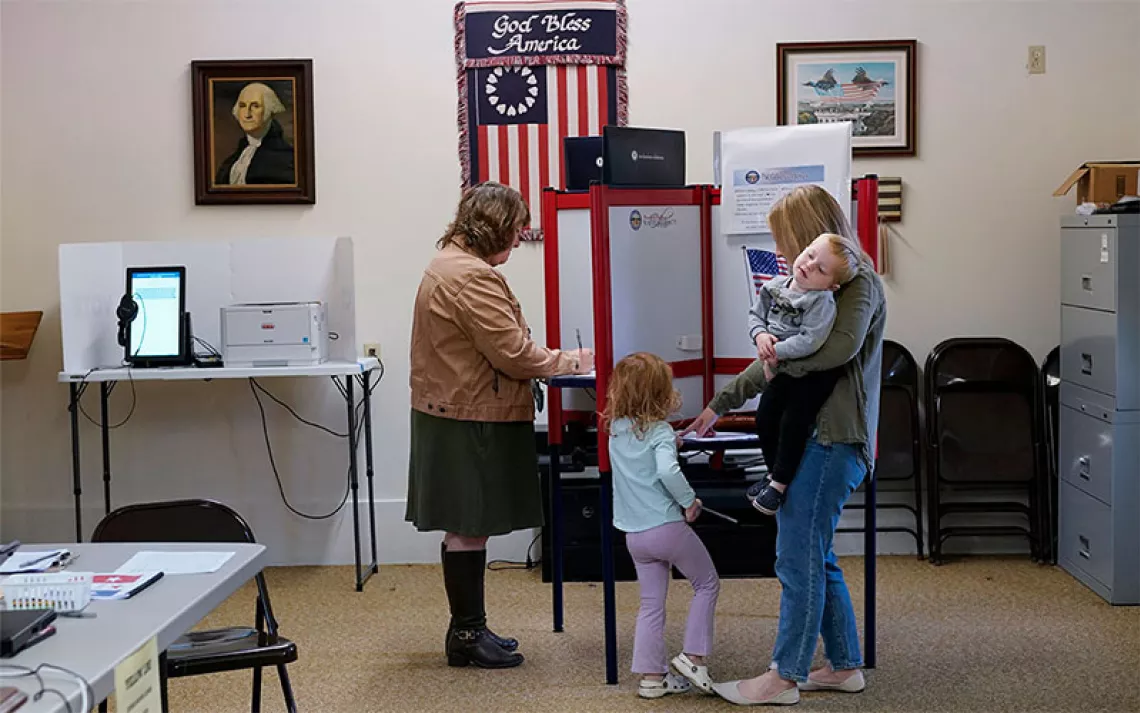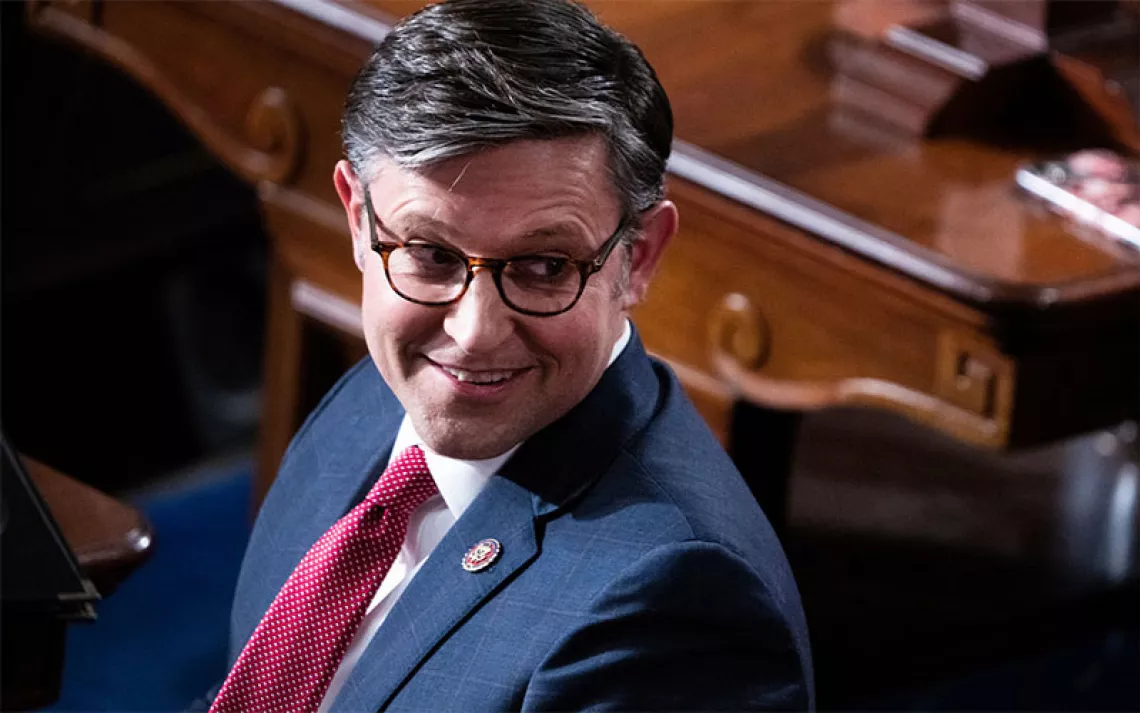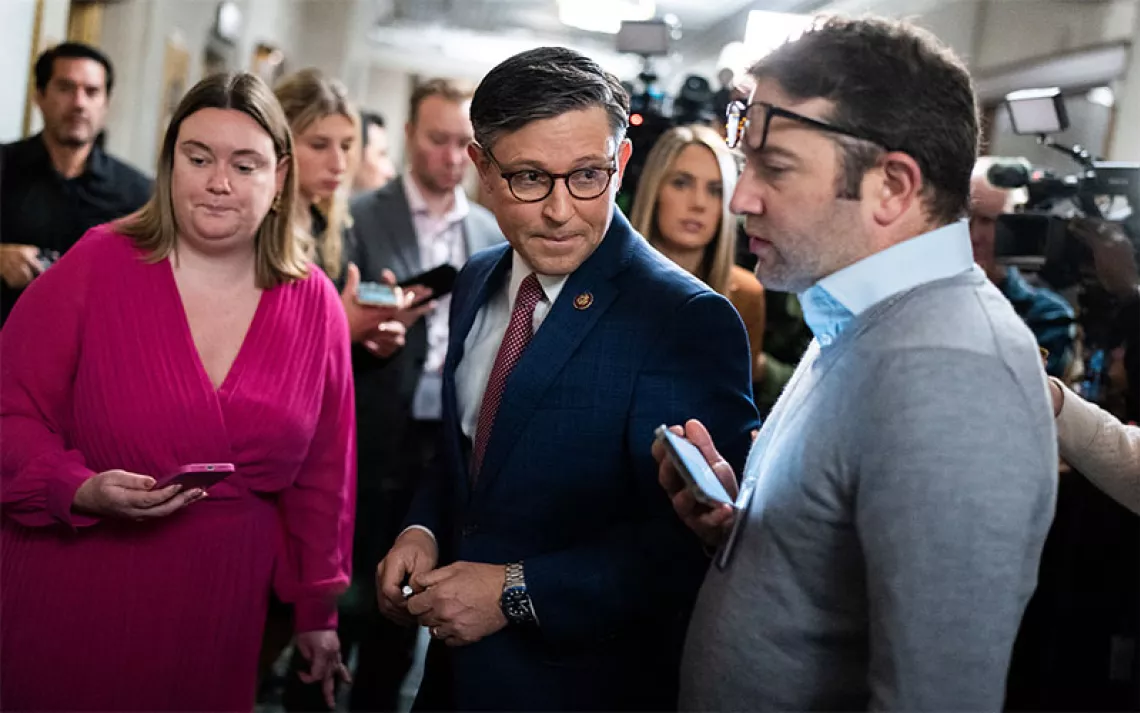Senate Democrats Make the Final Push to Build Back Better
All eyes remain on Joe Manchin to make or break the climate-action and social-investment bill
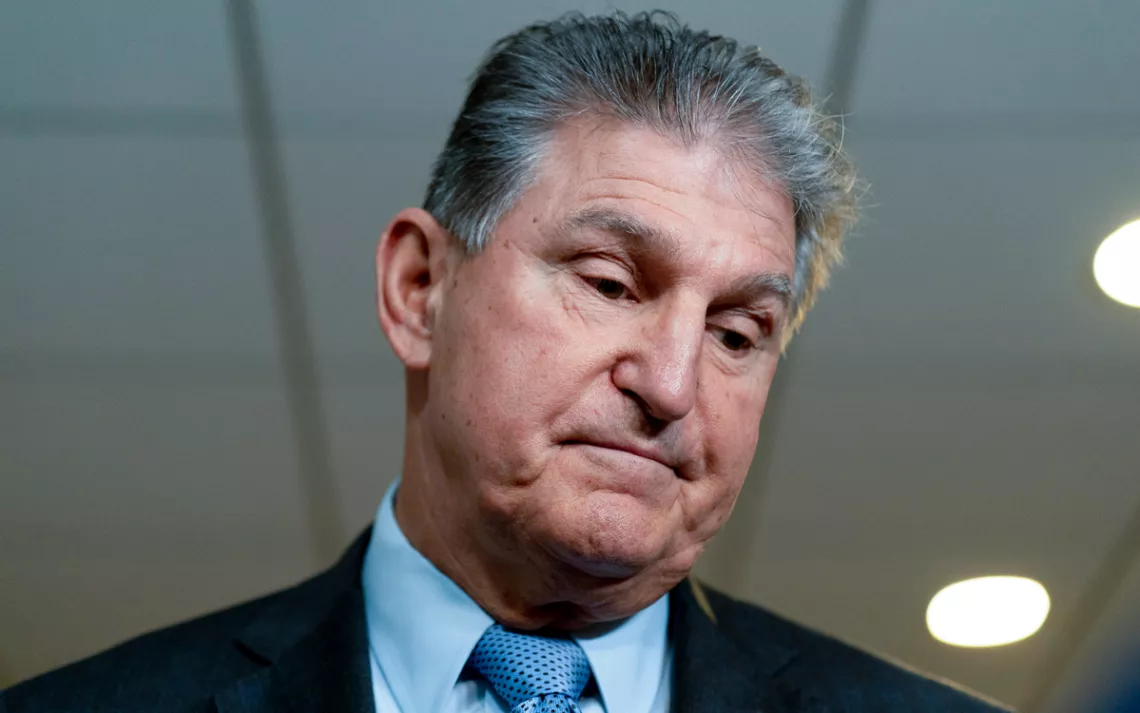
Photo by AP Photo/Andrew Harnik
The $2.2 trillion Build Back Better Act narrowly passed by the House in November (a.k.a. the budget reconciliation package) would be the largest investment the United States has ever considered in mitigating and adapting to climate disruption. If only it can get through the Senate, that is.
Whether the ambitious climate provisions will become law remains to be seen. Senate Majority Leader Chuck Schumer has pledged to pass it in time for Christmas. But while Senate Democrats are working non-stop to avoid ending up with coal in their stockings (literally), the bill's passage now is largely in the hands of Senator Joe Manchin, the Democrat from West Virginia who has made a personal fortune from his fossil fuel investments.
In its current form, the 2,135-page bill includes nearly $600 billion in climate and environmental-justice provisions. It sets aside $160 billion for a suite of clean energy tax credits to entice utilities to rapidly replace fossil fuels with renewables, $130 billion to make buildings more energy-efficient, and money for environmental-justice initiatives. It would also invest more than $80 billion to restore forests and farmland so that they sequester carbon, including $30 billion for a New Deal–style Civilian Climate Corps that would put Americans to work building climate-resilient infrastructure, reducing carbon emissions through conservation projects, and helping communities recover from climate disasters.
“You can’t even compare it,” said Melinda Pierce, the legislative director of the Sierra Club. “It’s an unprecedented level of investment. It’s historic. And it will absolutely make a difference.”
But it’s not at all clear that Democrats will be able to meet Senator Schumer’s deadline. The Senate parliamentarian is in the midst of determining whether the package’s policy provisions meet the Senate’s complicated budget reconciliation rules—a weeks-long process known in Senate-speak as scrubbing the package in the “Byrd Bath” (named for former Senator Robert Byrd). The two committees responsible for the bulk of the Build Back Better Act’s climate provisions—the Environment and Public Works Committee and the Energy and Natural Resources Committee, which is chaired by Manchin—haven’t even started. “And that’s a process that can only result in things coming out [of the bill],” Pierce said. “We know it’s not going to get bigger.”
In a phone call last week as she walked to Capitol Hill, Pierce said the dozen or so Senate offices she had spoken with were “all over the map in terms of whether this can get done.”
Speaking on ABC’s This Week, Senator Amy Klobuchar, the Minnesota Democrat, said she was confident the Senate would pass the package by Schumer’s deadline. “Senator Manchin is still at the negotiating table, talking to us every day, talking to us about voting rights, getting that bill done, restoring the Senate,” she said. “He’s talking to us about this bill.” Days later, CNN reported that Manchin is expressing skepticism to his Senate colleagues about whether they will be able to approve the bill by the end of the year.
“The big elephant in the room is negotiating a final package with an audience of one,” Pierce said, referring to Manchin. “The cake is baked, and yet Manchin is raising objections to many of the things we care about.”
Environmentalists are keeping close tabs on several crucial policies that they are concerned Manchin or other conservative Democrats might jettison from the final bill, including a tax credit for electric vehicles, a fee on methane emissions, and reforms to oil and gas drilling on public lands.
Manchin and Senate Democrats are still negotiating over $15 billion in tax incentives for electric vehicles. One sticking point is a $4,500 bonus credit for cars and trucks made in the United States by union workers. Manchin’s state of West Virginia is home to a nonunion manufacturing plant owned by Toyota, which has lobbied against the provision.
Democrats and environmentalists are quick to point out that Manchin is not in the position to get everything he wants. The question, though, is which senator can go head-to-head with him on EVs?
Senator Debbie Stabenow, the Democrat from Michigan who helped write the union provisions, might be just that person. Introducing President Joe Biden at the opening of GM’s new Detroit electric-vehicle manufacturing plant in November, she railed against “the nerve” of a Japanese automaker—which receives government funding and consumer rebates and relies on a union labor force in Japan—fighting against the bonus.
“Let me be clear,” Stabenow said to a room full of union workers. “Yes, we want that rebate to be used for vehicles made in America. Yes, we want you to receive a bonus if it’s made by the workers who built the middle class of our country.”
Ben King, a senior analyst for the research firm Rhodium Group, said that removing the union provision would shrink the overall size of the tax credit, leading to fewer electric vehicles on the road and weakening the bill’s overall emissions-reduction potential. But there’s another harm: The union provision is aimed, in part, at building capacity to produce electric vehicles here in the United States—ensuring an equitable transition to a green economy.
“We’ve already seen some EV manufacturers talking about how they’re going to scale up production capacity in response to this bill. So it seems to be a helpful tool to reduce emissions and improve US competitiveness,” King said. “Without the union provision, you lose some of that thrust.”
The reconciliation bill’s fee on methane—a greenhouse gas 86 times more potent than carbon dioxide—is also at risk. When Manchin said in October that he would not vote for the bill’s most powerful climate change provision, a plan to replace coal- and gas-fired power plants with solar and wind, Democratic lawmakers scrambled to find a plan B. They settled on a methane fee as one way to make up for the loss, and at the climate summit in Glasgow in November, Biden pledged to help slash methane emissions by 30 percent over the next decade.
Facing criticism from Manchin, Democrats agreed to pair the fee—which rises to $1,500 per ton in 2025—with $775 million in grants and loans to help the oil and gas industry slash emissions. An analysis by Resources for the Future, a nonpartisan energy research organization, found that the methane fee would be responsible for 65 percent of the bill’s reduction of industrial greenhouse gas emissions. By 2050, it would avoid 172 million metric tons of CO2 each year—equivalent to the annual emissions of more than 36 million cars. It’s still not clear, however, whether Manchin has signed off on the methane fee.
King said that even without a methane fee, the climate provisions in the Build Back Better Act would put the United States on the path to meeting Biden’s goal to reduce US greenhouse gas emissions by at least 50 percent below 2005 levels by 2030. But an analysis published by the Rhodium Group in October stressed that this would also require a concerted regulatory effort from the White House, states, cities, and corporations to bring down carbon pollution.
The version of the Build Back Better Act passed by the House also includes a number of reforms to oil and gas drilling on public lands and in federal waters. According to the US Geological Survey, drilling on public lands is responsible for nearly a quarter of the planet-warming greenhouse gas emissions generated by the United States.
When Republicans were in charge of the Senate in 2017, they passed a tax law (also through the budget reconciliation process) that opened up the Arctic National Wildlife Refuge to oil and gas drilling. The House version of the Build Back Better Act would repeal that provision and cancel any leases issued in the refuge.
Going one step further, it would permanently protect portions of the Outer Continental Shelf—which extends 200 nautical miles from the shore—along the entire Atlantic and Pacific coasts and the eastern Gulf of Mexico from future oil and gas exploration and drilling. A recent analysis by the environmental organization Oceana found that permanently protecting federal waters from drilling would avoid more than 19 billion tons of greenhouse gas emissions—equivalent to taking every car in the nation off the road for 15 years.
The House version of the bill also raises the rent and royalty fees that oil and gas companies pay to drill on public land from 12.5 percent to 18.75 percent—the first increase in more than 100 years. A recent Interior Department report found that such an increase would bring the federal royalty rate more in line with those charged by states and private landowners.
While Manchin ultimately voted against the 2017 tax law, he also opposed an amendment that would have prevented development in the Arctic National Wildlife Refuge. It’s unclear where he stands on the matter today. The outlook for the other drilling reforms might be better. In contrast to his opposition to the tax credit for union-made EVs, Manchin has not publicly expressed concerns about the offshore drilling provision, and he has even said he is sympathetic to raising the royalties for drilling on public lands.
“I think adjustments need to be made,” he told reporters in early December. “I’ve always thought adjustments need to be made.”
 The Magazine of The Sierra Club
The Magazine of The Sierra Club
